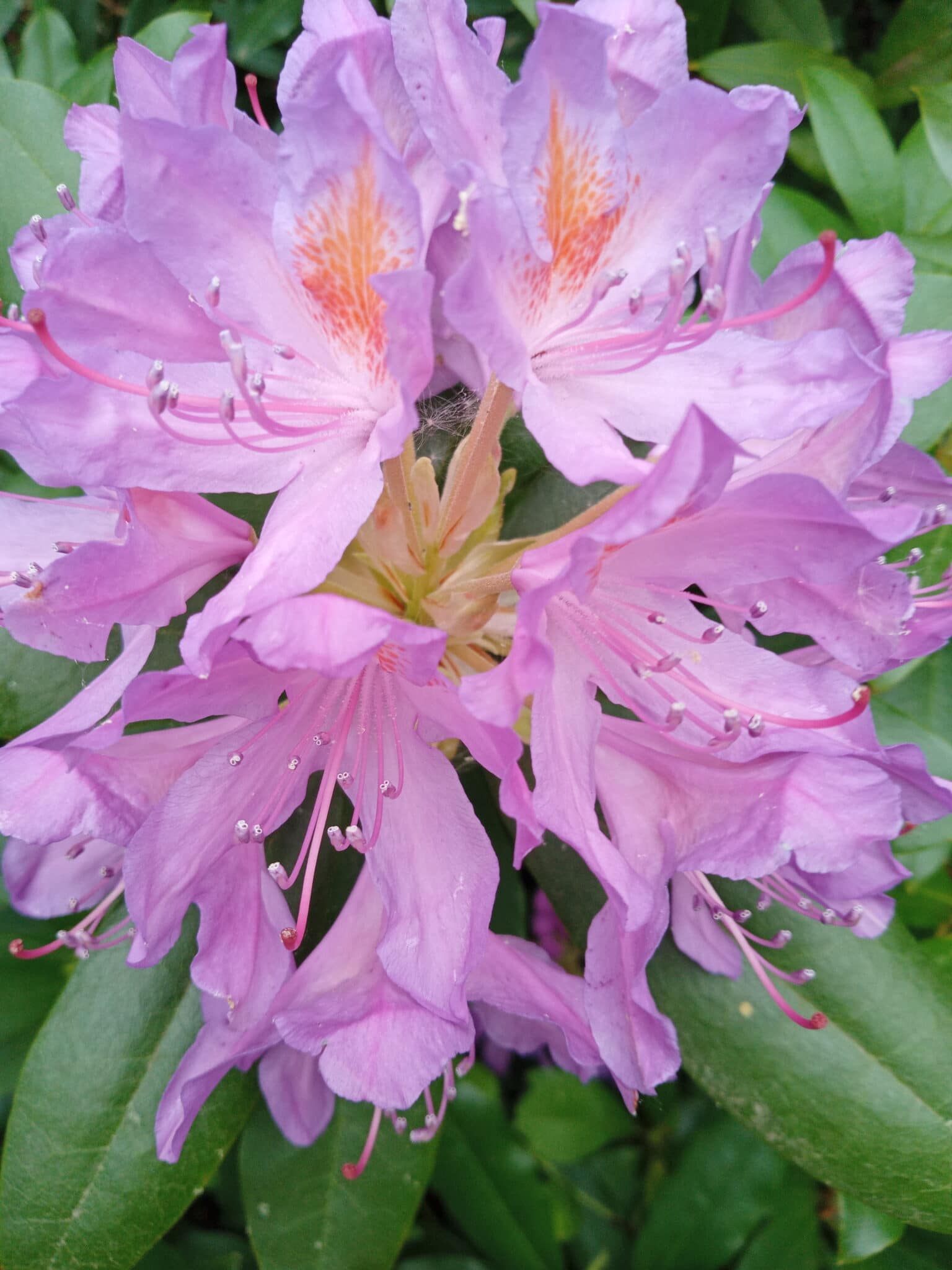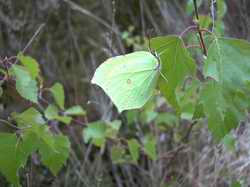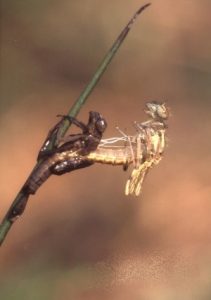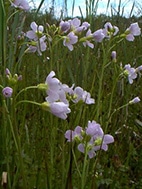
Nightjars usually start arriving from their winter quarters in Africa in May. The males arrive first usually during the first week of May, with the females following in mid-May. These nocturnal birds roost on the ground in heathland areas during the day and feed on moths at night. When glimpsed at dusk the nightjar resembles a large swift and can be heard ‘churring’. Keep an eye out for the real swifts which also return from Africa this month – make the most of them as they are the first migrants to leave in August.
The first sand martins, house martins and swallows were all first recorded on 6th April. Usually they arrive by the end of March but this spring’s northerly winds delayed many of the migrants. The first blackcap was heard singing on 30th March with the first willow warbler on 11th April. Migrants still to appear include garden and wood warbler, sedge warbler, spotted flycatcher, pied flycatcher and hobby. Hobbies are our only full-scale sub-Saharan migrant falcon. They arrive here this month and feed not only on birds, but also on insects, especially dragonflies. Their breeding season begins in early May with their chicks often just fledging in mid-August. This is an excellent time for them to learn to feed as there are plenty of young swallows and martins to chase as well as lots of dragonflies. Many birds are now feeding young with the first warblers and robins due to fledge this month. The early blackbird clutches have already fledged. Goldfinch and siskin have been recorded throughout April, with a male grey wagtail regularly seen at the reedbeds.
There are several broods of ducklings on the lake – the first brood hatched out on 2nd April which was a very early record, with some mallards still sitting on eggs, along with coots and moorhens. The fist moorhen and coot young hatched on the 5th April. The great-crested grebe abandoned their nest made out of pond weed and are presumably nest building elsewhere – the two adults can be seen most days fishing. Great-crested grebe courtship is worth watching – they fluff up their ruffs, shake their heads and present each other with water-weed staying beak to beak. The female swan started sitting around 21st March which is the same as last year and was the earliest record to date. The eggs usually hatch after five weeks’ incubation so should be due in early May. There have been up to five male mandarin duck at Stover – visible on the lake and ponds, with the females presumably sitting on eggs. The pochard, tufted ducks (last recorded on 27th April) and black-headed gulls have now left the lake, however there have been up to 30 herring gulls present throughout last month. Gadwall were last seen on 7th April, with shovelor last seen on the 11th. Common sandpipers are usually seen at Stover in April, but not this year. This bird is the most likely wader to be seen inland. It is a summer visitor and is easily told by its typical flickering-wing flight low over the water, and habit of bobbing its head up and down when at rest. Most of the over-wintering snipe have now left Stover. The goosanders left the lake on 9th March; they usually stay until the beginning of April. A red kite was seen on several occasions over the lake during April and shows that they are spreading out from Wales over the southwest.


Cockchafer beetles (also known as maybugs) are usually flying around in May. They are mainly nocturnal and emerge during the middle of the month after spending the previous three years as a white, root-feeding grub. Stag beetles also start to appear in May after feeding in dead wood as larvae for five years. Once an adult they only live for a few weeks using this time to find mates and lay eggs.
With the increase in numbers of flying insects bats should start to become more conspicuous at dusk as they fly over the lake feeding. Hedgehogs court, and badger, stoat and fox cubs are active above the ground in May. Roe deer hinds will drop their kids from mid-May onwards. The young stay hidden among the bracken and grass, not moving until their mothers’ return. Many of the freshwater fish in the lake, especially the rudd and roach, can now be seen at the water’s edge as they spawn. The smooth shelled terrapin is yet to be seen following its winter hibernation, the red-eared terrapin was spotted on 25th March.

The large Monterey Pines in the car pa

rk will soon start to shed huge quantities of pollen, covering the cars in a luminous yellow dust. Otherwind pollinated trees, such as oak and beech, flower before their leaves obstruct the drifting pollen. Holly, horse-chestnut and hawthorn also flower this month displaying their more obvious insect-visited flowers. Just before the trees are in full leaf and shade out the woodland floor completely, the spring flowers have their chance to grow, flower and attract pollinating insects. Most are powered by food stored in underground bulbs or stems. These include bluebells, ramsons and violets which are already out in profusion at Stover. Common-spotted orchid leaves are just starting to appear. The ferns are now uncurling and the horsetails are coming up around the lake path and in the marsh. Cuckoo flower (ladies smock) is out in abundance in the marsh also. Along with garlic mustard, this plant is the orange-tip butterfly caterpillars’ favourite food plant, so keep an eye out for the single eggs which turn bright orange shortly after being laid. The marsh marigolds are in flower in the marsh. Yellow archangel and celandine are in flower along with sanicle, ground ivy, yellow pimpernel and herb robert. Lords-and-ladies are also in flower and give off a foul stench attracting the flies which pollinate it.